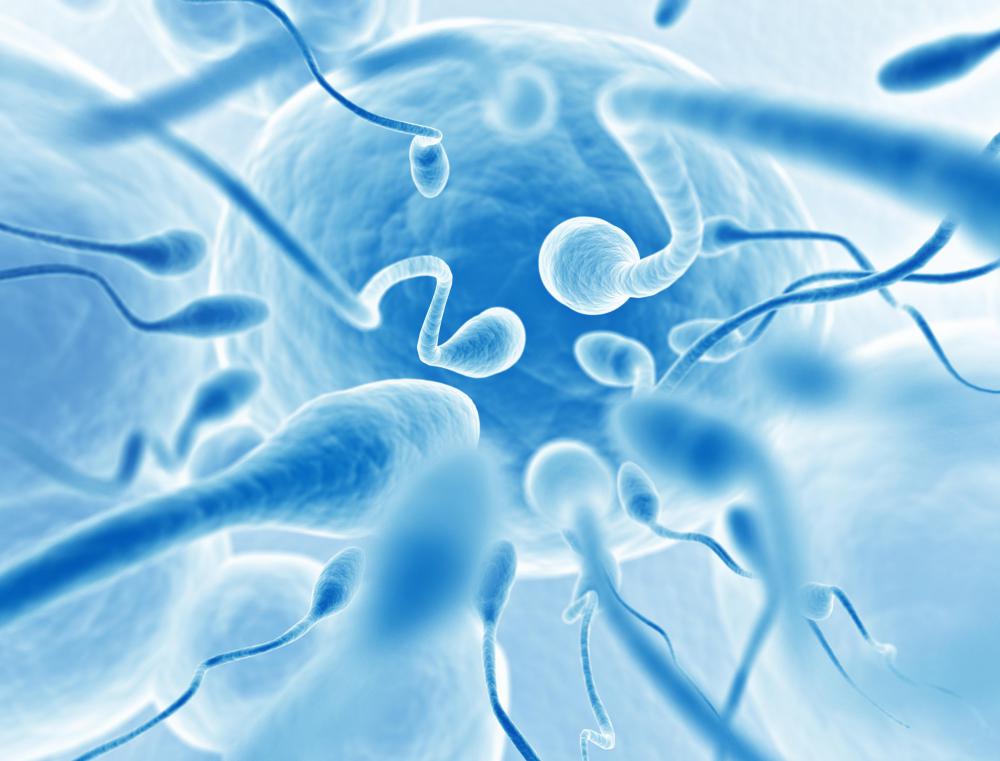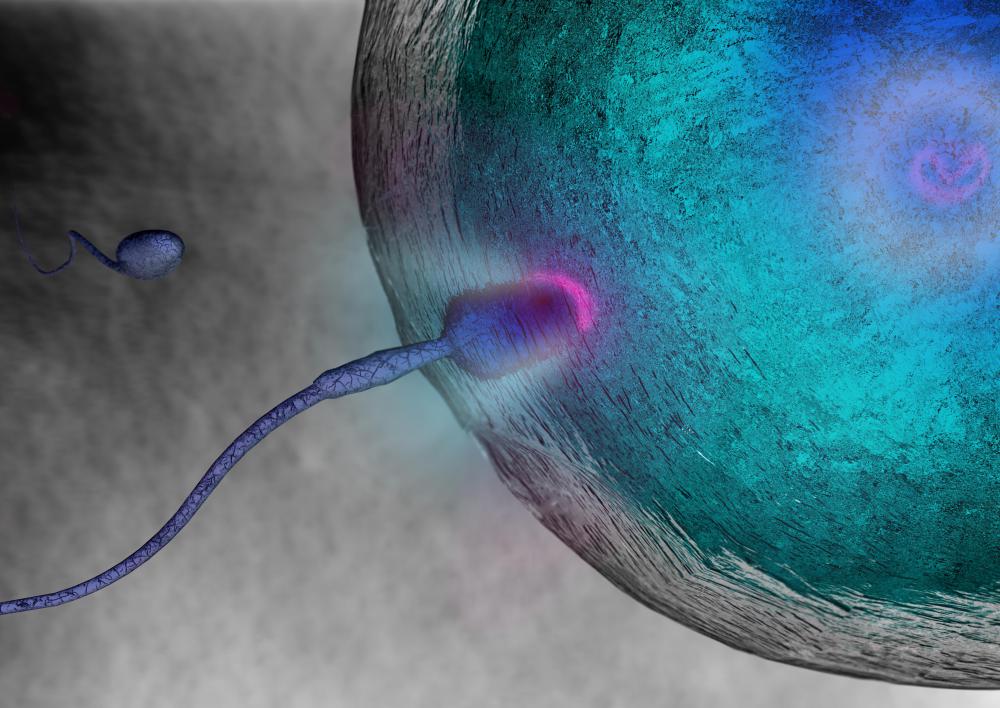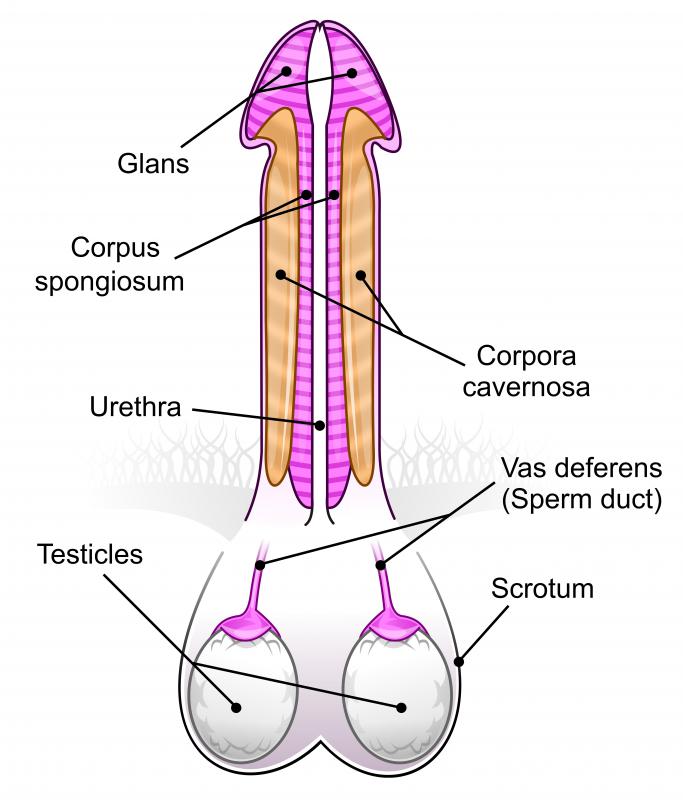At WiseGEEK, we're committed to delivering accurate, trustworthy information. Our expert-authored content is rigorously fact-checked and sourced from credible authorities. Discover how we uphold the highest standards in providing you with reliable knowledge.
What Is Sperm Transport?
The path of spermatozoa, in humans and animals, is the short but complex story of life's beginnings. Beyond the basics of mating, creation and conception, scientists have studied closely the exact means of sperm transport to best facilitate artificial insemination, infertility treatment and contraception. This includes not only an understanding of what happens to sperm before it leaves the man but also after it enters the woman.
The common knowledge is that sperm transport begins when sperm cells are produced in the male testes, but that is the extent of many people's knowledge. In each of the testes, small coils called siminiferous tubules manufacture about 12,000,000,000 sperm cells every month in the average mature male. Before maturity, these cells are stored just above the tubules in the epididymis, where they stay until reaching maturity.

When the penis is stimulated, sperm transport moves from the epididymis, through the vas deferens tube to ejaculatory ducts. At this point, the cells are joined with seminal fluid made in the nearby seminal vesicles. This fluid contains food for the cells in the form of glucose, and protection from the vagina's acidic climate in the form of alkalines. Upon ejaculation, the seminal fluid is propelled through the prostate gland, which adds a thick milky prostatic fluid for increased speed in swimming through the urethra for propulsion into the vagina.

The sperm transport can last as many as 48 hours. That is how long sperm have to find and fertilize the egg inside the uterus before perishing. According to the University of Pennsylvania Medical School, only about 200 of the approximate 300,000,000 sperm cells in each ejaculation will make it to the egg. Just one — and occasionally a few more — will be allowed entrance for new life to begin.

Once deposited at the cervical entrance, the seminal fluid will begin to release the sperm cells from its grasp. This starts the process of capacitation, or the final maturation and hyperactivation. The cells mix with acidic cervical mucus, which weeds out the weak cells and allows the strong cells to enter the cervix.
When sperm transport arrives at the fallopian tubes, the uterus actually stores thousands of sperm cells in suspended fertility until the egg reaches the mid-section of the fallopian tubes, called the ampullary-isthmic junction. This is where most human fertilization takes place, as the sperm — coaxed by hormonal and thermal impulses — can arrive at the immature egg, or oocyte. Here, the eggs outer membrane, called the zona pellucida, allows entrance to one sperm and then locks out all others. A single-celled zygote is formed between egg and sperm, which in the coming nine months will divide multiple times to produce the offspring.
AS FEATURED ON:
AS FEATURED ON:














Discuss this Article
Post your comments